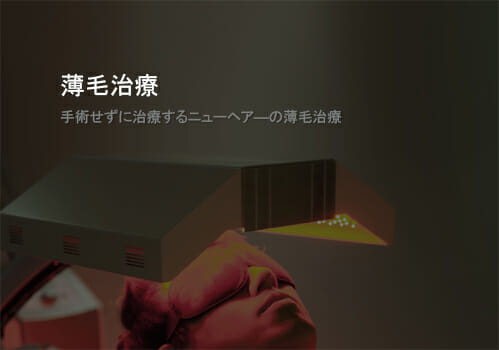22 Features of NHI
The valuable and touching vision raises my enthusiasm
and all members are the driving forces toward the goal.
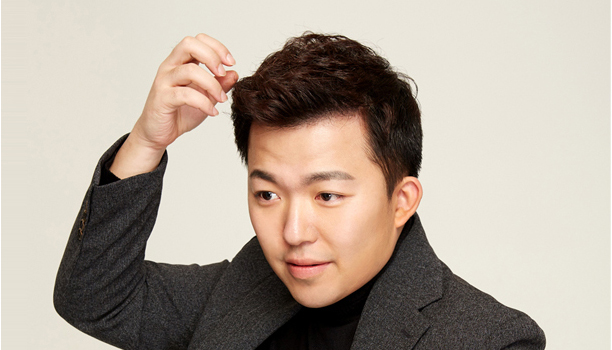
Point 01
Check the amount of the transplant after the surgery.
The most interesting thing before undergoing hair transplant is the required amount of transplant because it is a factor that determines how rich the hair will look after the hair transplant and how much it will cost. However, after the surgery, there is no way of checking how many hairs were implanted. Since it is impossible to count the grafts one by one while looking into the mirror, you can just hope that the hairs are well transplanted, as promised by the hospital.
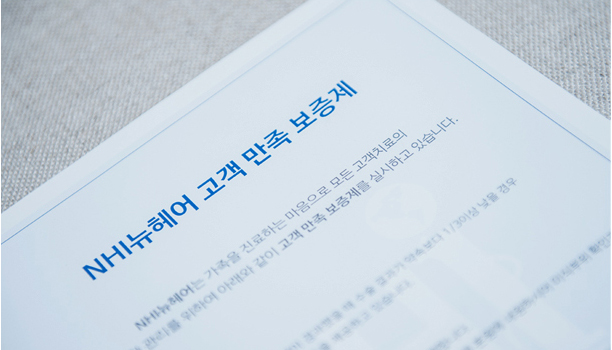
Point 02
Customer satisfaction guarantee system.
After the hair transplant, there are few things that the patient should remember, and they are easy to bear in mind. For example, one must not smoke, drink, or engage in strenuous exercise for a month. They are not difficult things to do to keep your precious hairs growing. All the employees of NHI New Hair will do their best to achieve satisfactory surgical outcomes. If there is any shortcoming in the final result one year after everyone has done his or her best, we must come up with a future plan together.
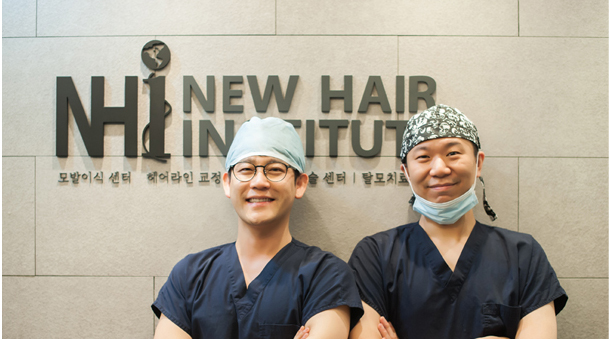
Point 03
HOTLINE with the surgeon after the surgery.
To prevent unnecessary stress from the transplanted hair follicles, a patient who underwent surgery can always speak directly to the surgeon over the phone. Though hair transplant surgery is unlikely to cause pain or emergency situations as in other types of major operations, at the end of day, the psychological state of the discharged patient revolves around anxiety, and the patient may even be surprised by minor developments. The anxiety felt by patients is natural, and though they do not need to worry too much, they may be worried because they do not know the exact cause of their anxiety and the recovery process.
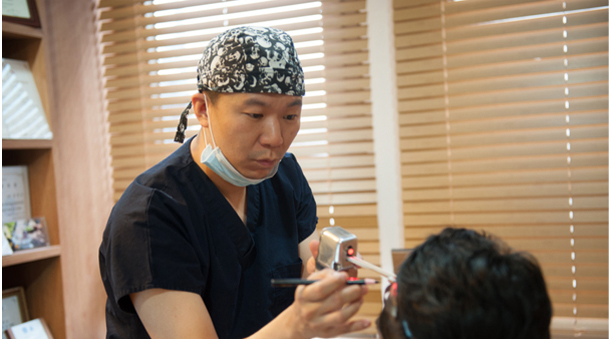
Point 04
Laser pointing design.
The hairline design is determined through sufficient consultation, and NHI Hair proposes the most ideal design based on the state in which one’s hair can completely grow. It is not easy to predict one’s appearance after 12 months with the design drawn on a plane. We are proposing a design based on the ideal hairline by observing the hairlines of more than 6 cases a day.

Point 05
It is less painful than dental treatment.
If you have a Bluetooth headset, you can make phone calls to your family or friends during the surgery. It is possible to listen to your favorite music or radio. You can also watch a TV program on the wire or movies that you stored in a file.
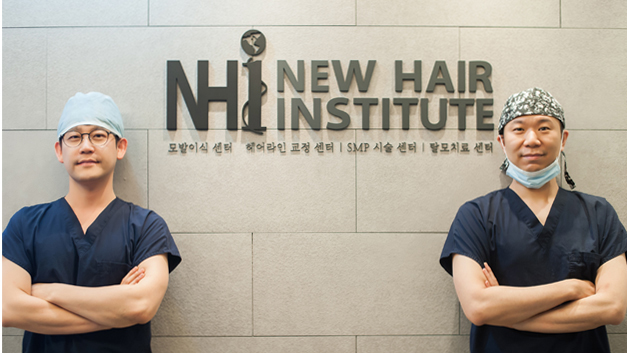
Point 06
Compliance with the oath about ruling out a non-expert on hair transplant.
NHI New Hair is taking the lead in banning untrained non-experts from performing hair transplant. It is the practice of the fundamental spirit of NHI New Hair to cherish every single hair of the customer. When you visit the hospital for the first time, you will be asked to write the required information on the recording sheet provided by the hospital to check if you can undergo surgery. You may hear some opinions regarding your hair loss, and be informed about a surgical option from the staff of the hospital. However, you must hear the opinion on your situation and the surgery plan from a competent doctor. It is illegal for a person who is not a specialist to present opinions to a patient or to perform a surgical procedure.

Point 07
Scar-less suture
To collect hair, part of the scalp on the back of the head is taken off, and the remaining empty space is stitched. At this time, if the suture side is positioned to the “site where there are hair follicle cells”, hair will grow on the scar. Many patients are wondering about scarring before they undergo surgery. The well-sealed surgical site tends to become tapered and becomes faint over time. About one year after the surgery, the scar would heal and it would be difficult to find. Unless you have very short hair, you would hardly notice it. If it is treated well with a scar-less suture, it will be difficult even for a hairdresser to find the traces of the surgery.
Point 08
Point 08
Scar-less suture
To collect hair, part of the scalp on the back of the head is taken off, and the remaining empty space is stitched. At this time, if the suture side is positioned to the “site where there are hair follicle cells”, hair will grow on the scar. Many patients are wondering about scarring before they undergo surgery. The well-sealed surgical site tends to become tapered and becomes faint over time. About one year after the surgery, the scar would heal and it would be difficult to find. Unless you have very short hair, you would hardly notice it. If it is treated well with a scar-less suture, it will be difficult even for a hairdresser to find the traces of the surgery.

Point 09
The same surgical environment as organ transplant surgery
It is not about transplanting hair, but it is about transplanting hair follicle cells. Since mankind first succeeded in introducing liver transplant in 1967, the development of a preservative solution in which to store the liver has played a major role in the history of liver transplant surgery. In NHI New Hair, all hair follicle cells just before transplantation are kept in a long-term preservative solution. If 1,000 hairs are implanted, 930 to 970 hair follicles will survive successfully. Due to various unknown causes, 30 to 70 hair follicles die without being able to take root in our bodies. The purpose of using a long-term preservative solution is to make at least one more hair follicle engrafted, and that is part of NHI New Hair’s efforts.

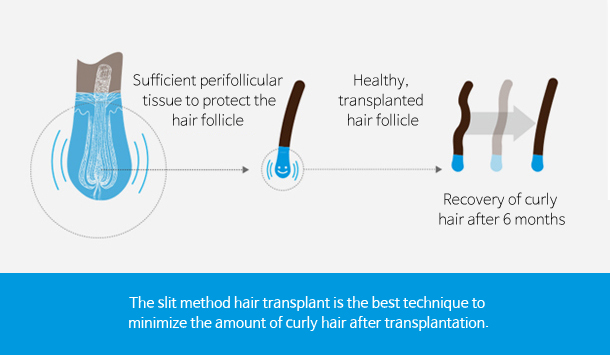
Point 10
Fast recovery from curly hair to straight hair
Until about 6 months after the hair transplant, only short hairs are seen in the transplanted site, as new hairs just started growing. At this time, if newly implanted hair grows with severe curls, its appearance might look messy, and patients complain about it. However, in the slit method hair transplant, hair follicles have been transplanted under the healthiest conditions, thus patients will not have curly hairs for a long time. Faster recovery from curly hair to straight hair is one of the advantages of the slit method hair transplant.
Point 11
Point 11
Hyperbaric Oxygen Therapy Program in which hair follicles can breathe
The hyperbaric oxygen therapy program supplies oxygen to hair follicle cells that are transplanted with 100% oxygen at high pressure to keep them healthy even before blood vessels are created. Every hair in our body has a capillary of its own under the skin. Through these blood vessels, hair follicles are supplied with nutrients and oxygen. However, the transplanted hair follicles need nutrients until blood vessels are created (about 4 days) as they can only survive with oxygen in the air. I thought if there was a way to supply hyperbaric oxygen regularly from the outside, it would be helpful in improving the engraftment rate of hair follicles. It is based on the fact that hyperbaric oxygen therapy is applied to a finger that has been severed accidentally so it can quickly restore blood vessels after it is attached.


Point 12
We strictly observe the U.S. FDA and Korean KFDA standards.
NHI New Hair adheres to the strict medical regulations and particular procedures that are required in the U.S. and Korea, and is cooperating with the sharing of clinical data requested by the national health authorities in each country. Also, we are faithfully observing the medical law prescribed by the Republic of Korea, and do not recommend any form of treatment or product whose effect has not been categorically proven. Providing the most objective and honest information to all patients suffering from hair loss is the fundamental spirit of New Hair, which cherishes every strand of hair.
Point 13
Zero Transplant Scars
The slit method is divided into the processes of making pores and transplanting hair follicles. This keeps the transplant site clean, and it prevents unnecessary deep penetration of the transplant hair follicle, leaving no scar on the forehead and fewer scabs. In the slit (pore-making process) method, a very sharp and thin tool is used in the area to be transplanted to reduce damage to the scalp. The small, sharpened pores hold the transplant follicle firmly without shaking, ensuring a wide area for nutrient supply. Furthermore, since there is no gap between the transplanted hair follicle and the scalp, there are no unnecessary scabs caused by bleeding. This helps the patient to recover quickly, without disturbing his or her everyday activities after the hair transplant, ensuring clean transplant results as if they were originally one’s own hair over time.

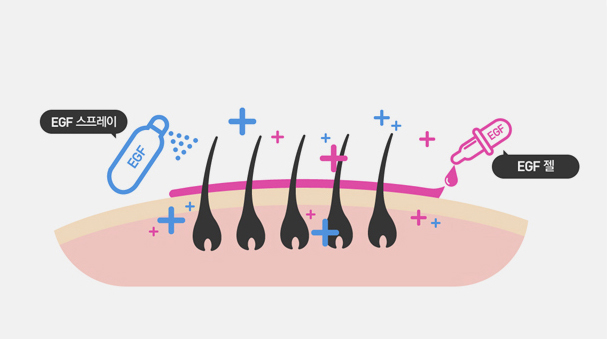
Point 14
EGF CARE makes scars smaller
If the transplant site is covered with EGF gel after the surgery, the process of wound healing of the pores is accelerated, alleviating the traces of the surgery on the forehead and reducing swelling. We provide spray-type EGF for continuous use even after the patient is discharged to minimize disruption to daily activities three days after the surgery.
Point 15
Keeping the temperature at 4℃ with 100% ice
We only use pure ice, and not a refrigerant, to maintain the temperature of hair follicle cells at 4℃. Storage temperature is as important as the location where the hair follicle cells are stored. By using a ‘refrigerant’, it is possible to maintain a relatively constant temperature for a long period of time, but it is difficult to maintain an accurate temperature. However, using ‘ice’ keeps the exact, ideal temperature, despite the disadvantage of frequent replacement.

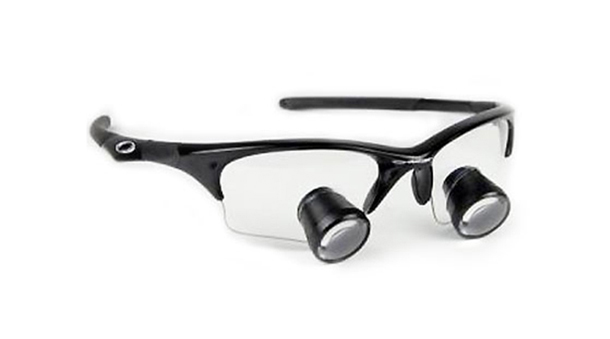
Point 16
8 magnification loupe
In NHI New Hair, X8 Loupe is always worn when making pores with slit. Slit hair transplant allows hemostasis in every pore. While keeping the forehead always clean, if there is a place where even thin hair is still growing, pores are created by avoiding the area. X8 Loupe is worn in the process of creating slits to avoid remaining hair more accurately.
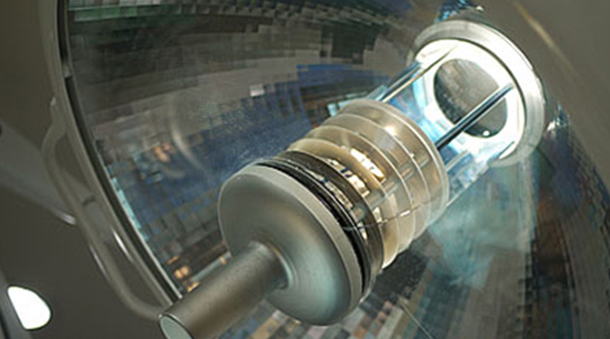
Point 17
LED Surgical Light System for the Safety of Hair Follicles
We only use pure ice, and not a refrigerant, to maintain the temperature of hair follicle cells at 4℃. Storage temperature is as important as the location where the hair follicle cells are stored. By using a ‘refrigerant’, it is possible to maintain a relatively constant temperature for a long period of time, but it is difficult to maintain an accurate temperature. However, using ‘ice’ keeps the exact, ideal temperature, despite the disadvantage of frequent replacement.
Point 18
Sterilization and use of disposable goods
E.O. gas is a very toxic gas. Not only humans, but all living things, including plants and animals, cannot survive once exposed to this gas. Therefore, bacteria and viruses that may remain in the surgical tools are disinfected by exposing them to E.O. gas. The surgical tools are exposed to such type of gas in the sterilizer at proper humidity and vacuum state for a sufficient time as part of sterilization management. Furthermore, all the tools used in NHI New Hair are disposable. In particular, disposable needles, such as vascular needles, used in the process of making slits (pores) can be easily sourced, thus they do not need to be used repeatedly through disinfection.

Point 19
AQUA Cutting Hair Transplant
Hair transplant is a type of surgery in which ‘hair follicle cells’, the basic cell tissues, are transplanted to induce hair growth. Until these cell tissues are transplanted into the forehead and successfully placed, they must endure the elements with the supplied nutrients from moisture. Therefore, exposure of the hair follicles to air must be minimized.
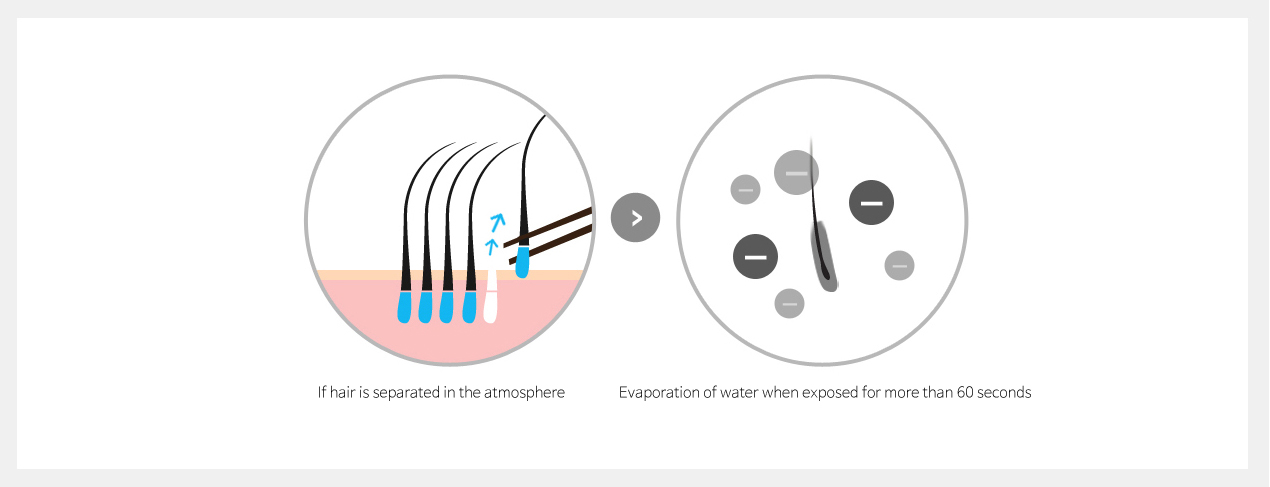
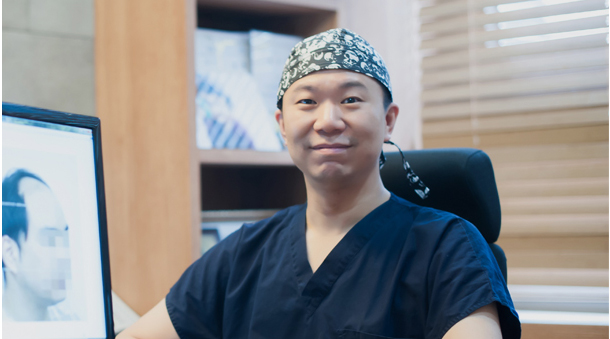
Point 20
Provision of Balanced Information on Hair Loss and Hair Transplant
If hair is separated in the atmosphere through exposure to air for more than 60 seconds, water evaporates. For patients suffering from hereditary hair loss, only treatments with Propecia and Minoxidil, which contain a component of finasteride, and Avodart, which has a component of dutasteride, are effective. On average, seven years is wasted due to inaccurate information, beginning from hair loss to seeking medical attention, leading to further hair and economic losses. NHI New Hair does not recommend unnecessary remedies or products to attract scalp disorder and hair loss patients.
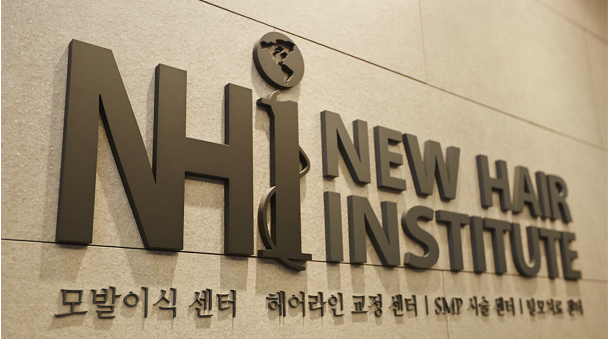
Point 21
Research and development of NHI New Hair
Since 2009, we have been publishing papers at various academic societies in Korea every year, sharing new clinical results, acquiring advanced skills, and conducting further research.
· Presented at the SLIT method hair transplant academic society for 3 years in a row in Korea
· First to publish a paper on hyperbaric oxygen therapy after the hair transplant
· Developed SMP (Scalp Micropigmentation) and presented its findings domestically and abroad
· First to publish a paper on AQUA Cutting hair transplant
Sorry
This video does not exist.Point 22
Even after the surgery and anesthesia starts wearing off, it does not hurt.
During hair transplant, anesthetic management is done effectively, so it is rare for a patient to complain about feeling pain. However, once anesthesia wears off upon returning home, pain may be felt, and it may interfere with post-surgery recovery. Hair transplant is a type of surgery in which the patient maintains the same posture for an extended period, so patients must relax after the surgery. If postoperative pain persists, stress increases in the body, which may lead to adverse effects on freshly transplanted hair follicle cells








